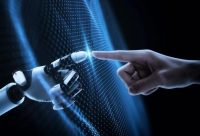Using AI‘s ability to predict electricity production and component failures could make renewable electricity more affordable and reliable to accelerate widespread adoption, says Joyjit Chatterjee, a data scientist at the University of Hull in England. However, it has not been used in this area as it has been in many other areas such as e-commerce, manufacturing and healthcare. “Artificial intelligence could have a real impact on climate change and sustainability,” he said, “but there is very little work in the field of renewable energy.”
So Chatterjee and his colleague Nina Dethlefs, Director of Computer Science Research at the University of Hull, brought together experts in AI and renewable energy at the recent International Conference on Learning Representations (ICLR), a conference on artificial intelligence. In an opinion paper published June 10 in the Data Science journal Patterns, the pair presented key messages from the conference, outlining barriers to limiting AI’s impact on renewable energy, and how to use mature and emerging artificial intelligence approaches to overcome these obstacles.
Wind turbines and solar panels on utility-scale farms are equipped with sensors that operators can remotely monitor their power generation and health. These sensors include vibration sensors, temperature sensors, accelerometers, and speed sensors. The data they generate presents an opportunity. AI models trained on historical power generation and failure data can predict unexpected failures in wind turbine gearboxes or solar panel inverters, helping operators prepare for outages and plan routine maintenance.
Reinforcement learning is an exciting new machine learning technique that can help improve these models, Chatterjee said. In reinforcement learning, algorithms interact with the world during training, receiving constant feedback on reward or punishment decisions to learn how to achieve certain goals. This real interaction may come from humans.
“One of the dangers of AI is that it’s not perfect,” Chatterjee said. “We can have people involved, constantly helping to optimize the AI model. People often worry that AI will replace the human part and make decisions. Intelligent models collaborate to jointly optimize models for decision support.”
He added that a focus on natural language generation, the process of converting data into human-readable text, will increase trust in and use of artificial intelligence. Due to the lack of transparency, industry engineers are reluctant to use the few failure prediction models created by researchers. Providing operators with brief natural language information will facilitate interaction.
For the AI community, given the commercial sensitivities of the wind and solar industries, a big barrier to creating better models is the limited amount of publicly available data. In addition to the industry’s reluctance to share data publicly, Chatterjee said the lack of standards can also affect the development of AI models. “Wind farm operators in different parts of the world manage data differently, so it’s really challenging for researchers to share resources.”
To solve this problem, the AI community can leverage a machine learning technique called transfer learning. By identifying hidden patterns in various features in the data, the approach allows data scientists to transfer knowledge gained from solving one machine learning task to another related task, making it easier to train neural networks and develop deep learning models when data is limited . “This will help you develop a model for Turbine Y on top of the model for Turbine X only, even without historical data,” Chatterjee said.
However, neural networks are not always the answer. Since these deep learning models are traditionally suited for learning from images and text, they have become popular. The problem is, neural networks often fail. Furthermore, training these large-scale, computationally complex models requires energy-intensive high-performance computing infrastructure that is difficult to achieve in developing countries.
At least when it comes to renewable energy, sometimes simplicity can be fine. The AI community should first focus on using simpler machine learning models such as decision trees to see if they work. “Usually not every problem requires a neural network,” Chatterjee said. “Why increase carbon emissions by training and developing computationally more complex neural networks? Future research needs to be done on less resource-intensive and carbon-intensive models.” “




GIPHY App Key not set. Please check settings